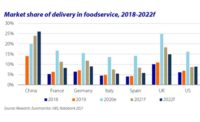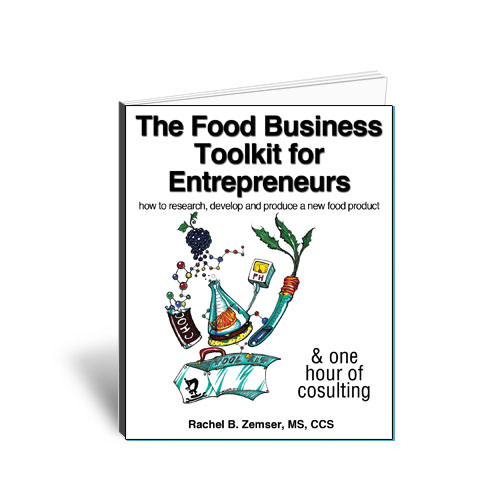What’s on the Menu for 2023?
Technomic thought leaders forecast trends for 2023 to help aid US foodservice professionals prepare for the year ahead

Technomic released its latest US whitepaper, What We Foresee for 2023, sharing its foodservice industry trend predictions for the upcoming year. Restaurants are still facing significant challenges—largely due to the continued effects of the COVID-19 pandemic—resulting in a delay in a complete return to sustained normalcy. Economic headwinds, including inflation and the threat of a recession, are also setting up new hurdles for operators to navigate. But, despite a challenging start to 2023 expected, the latter part of the year should bring about optimism as the industry emerges from high inflation and a soft economy.
"The industry is expected to face some stumbling blocks going into 2023, led by weakened consumer sentiment and ongoing pricing difficulties," says Joe Pawlak, managing principal within Technomic's Advisory group. "But as the year progresses, the situation is expected to moderate and the industry will benefit with stronger sales and traffic."
The ways in which operators choose to traverse these aforementioned hurdles will include balancing the ease and cost-effectiveness of off-premise dining with the pent-up demand among consumers for the experience of in-person dining, despite continued staffing and inflation challenges. How might operators tempt diners to return to their dining rooms? Tapping into the latest, forward-looking menu innovations will still be key to intriguing consumers and differentiating from competitors.
What's to come in the coming year for foodservice? Here are Technomic's predictions for 2023 foodservice trends.
As Pandemic Fades, Recession Looms
The foodservice industry’s recovery is up against significant roadblocks. Inflation has reached levels not seen in four decades, especially in food categories, while federal interest rate hikes intended to cool off demand have shaken investor confidence. Although unemployment remains low and consumer finances are relatively stable, stimulus funds have dried up and savings rates are down. There is reason for optimism in the coming year, however, as any recession is expected to be relatively mild.
At the consumer level, increasingly expensive groceries will further shrink the perceived value gap between food at home versus food away from home, making dining out more attractive. And while restaurant order and visit frequency will remain flat or may even diminish, consumers’ desire to maximize each occasion will be a lifeline for operators.
On-Premise Bounces Back
Consumers’ gradual return to on-premise occasions shows that the industry’s demotion of dining rooms may have been premature. Years of social distancing and restrictions have created a pent-up demand for an experience beyond a simple meal, while workers’ reappearance to offices, increased travel and lengthier time windows for pickup at busy units are also making placing an order and eating on-site more attractive. As consumers continue to rebalance their restaurant habits, this on-premise renaissance will challenge operators who are short of ideal staffing levels and pinched by inflation. Longer term, the outlook still looks brighter for off-premise occasions, with on-premise dining projected to still fall short of reaching pre-pandemic levels.
Going Toward the Grain
Highly comforting grain products with a high profit margin, including breads and pastas, will shine in 2023. Operators will harness the versatility of flour by innovating with traditional dishes, such as English muffin pizzas, focaccia French toast and fried lasagna, and global options, including Jamaican coco bread and Sardinian pane carasau flatbread. Expect a spotlight on rice in new preparations, such as aging, and international applications, including Philippine suman rice cakes and South Indian appam pancakes, made with fermented rice batter. As for other grains, millet and teff will become more commonplace gluten-free alternatives, while freekeh and emmer will give ever-popular bowls new life. And grains, in general, will extend to new mealparts and dayparts, such as desserts, drinks and breakfast.
Blurred LSR Lines
The playing field across limited service is increasingly evening out. For quick-service and fast-casual restaurants, rising food costs combined with inflation-fueled consumer price-sensitivity are shrinking the value gap. Further, off-premise services once touted by fast food are also now routine offerings at fast casuals. And fast casual’s stake in food quality is being debunked as consumers fail to notice a distinction between burgers, chicken wings or tacos sourced from these segments when ordered and consumed at home. This great blur within limited service will widen these operators’ competitive set and force consumers to prioritize occasions and cravings over value, convenience and quality when making dining decisions. Watch for limited-service operators to step up efforts to distinguish their brand through refreshed decor, signature menu introductions, enhanced loyalty programs and seamless service.
The Power of Preserving
Pickling and fermenting preparations are having a moment. Not only do these preparations promote ingredient preservation and health connotations but they also allow for unique culinary experimentation. Expect pickling to extend to everything from proteins and french fries to herbs and nuts, while pickled ingredients, themselves, will top unexpected dishes. At the bar, pucker up with sour cocktails containing fermented, gut-healthy ingredients, such as kombucha, miso and sake. Lastly, look to menus to cite more specific preserving processes, such as lacto-fermentation (the use of bacteria to create lactic acid), to provide consumers with a level of scientific transparency
Workers Unite
Historically, worker activism has lagged in foodservice. But in 2022, an uptick in labor union activity saw major chains confronted with employee demands around more predictable schedules, better benefits and higher pay. More power falling to employees will continue next year as union negotiations play out and legislation at the state and local levels establish new baselines for hospitality workers, with wages as high as $22 per hour proposed in California. Even without new regulations, employees will feel emboldened by their designation as essential workers during the pandemic and by the continued struggle of operators to fill staff positions.
Pink on the Brink
In 2023, get ready to be tickled pink. In the fun, nostalgic realm, expect bubblegum flavors, funfetti and new maraschino infusions to surprise and delight. This happy, photogenic color for food and drink also denotes antioxidant-rich health benefits in some cases. And while nutritious ingredients like strawberry puree and dragon fruit are already quickly growing on menus, newer pink-forward fare that nourish will flourish. Pink variations on classics, including pineapple, salt, celery and peas, will thrive alongside pink-hued schisandra berries, cara cara oranges and hibiscus-steeped bissap.
Looking for a reprint of this article?
From high-res PDFs to custom plaques, order your copy today!







